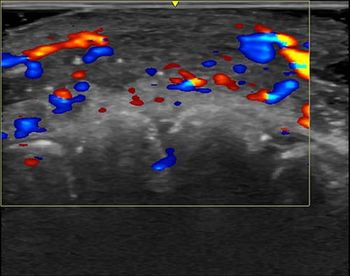
Customer need drives Philips’ latest corporate bid
Philips is making a play for RIS-developer XIMIS because its customers need an integrated RIS/PACS, according to Wim Vaatstra, Philips senior vice president.
Philips is making a play for RIS-developer XIMIS because its customers need an integrated RIS/PACS, according to Wim Vaatstra, Philips senior vice president.
"They don't want two separate providers for applications that need to work so closely with each other," said Vaatstra, who has been closely involved in the negotiations leading up to the proposed deal to acquire XIMIS.
Philips announced Aug. 16 its decision to acquire the El Paso, TX-based company, stating that the RIS would complement its iSite PACS. Philips has offered iSite since acquiring Stentor, its developer, in August 2005.
The plan is to fold the RIS company into Philips' healthcare informatics business group this fiscal quarter and integrate its XIRIS (Extended Internet Radiology Information System) with Philips' iSite, a fee-for-service PACS. XIRIS manages patient registration and scheduling, tracks exams, provides staff and resource management, and generates reports addressing various management issues.
To date, iSite customers typically have purchased a RIS on their own or have chosen one from a company partnering with Philips. In either case, Philips engineers have worked with customers to make sure the RIS and PACS work together.
Vaatstra expects few challenges integrating the Web-based system with iSite.
Philips already has experience with XIRIS as one European site has installed both iSite and XIRIS. U.S. sites are in various stages of implementing the RIS.
XIRIS can be scaled to fit the needs of small facilities as well as large and multisite hospitals. This complements iSite, which has a similar range.
XIRIS appeals to Philips because the web-based RIS is built on modern database technology that supports quick responses to customers' requests for information. Other RIS products are based on IT from the 1980s and 1990s, according to Vaatstra, as developers had to keep RIS upgrades compatible with their earliest versions.
"You see many RIS vendors who are captured by their own technologies," he said. "We looked at companies that could provide the next-generation RIS."
Philips found one in XIMIS, which not only has built its platform on advanced IT, but has designed it to support multiple languages. Customers using XIRIS extend across North and South America, as well as Europe, Vaatstra said. The multilingual aspect of XIRIS was a critical consideration in Philips' acquisition of the company, as it plans to integrate the RIS in global iSite offerings.
"With our internationalization of iSite, it was an absolute must to have an international RIS," he said.
Newsletter
Stay at the forefront of radiology with the Diagnostic Imaging newsletter, delivering the latest news, clinical insights, and imaging advancements for today’s radiologists.




























